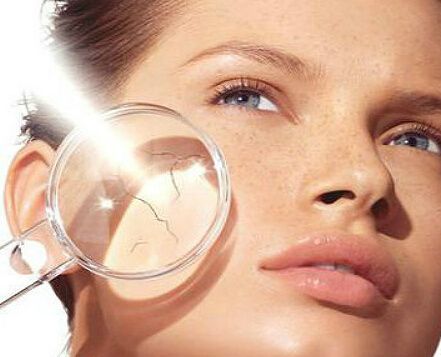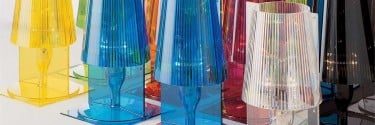What is ultraviolet light? What are the hazards of ultraviolet rays?
What is ultraviolet light?

Eighty percent of skin aging comes from ultraviolet rays. According to different wavelengths, ultraviolet rays are divided into three types:
UVA: reaches the dermis of the skin, causing photoaging of the skin. It is a kind of ultraviolet rays with the longest wavelength, which is not absorbed by the ozone layer at the top of the atmosphere. Even skin cancer, so UVA will not only stimulate pigment synthesis and make the skin color “blacken”, but also the main cause of skin “aging” and fine lines.
UVB: reaches the epidermal layer of the skin, causing the skin to tan. It is a medium-wave ultraviolet light, which causes sunburns on the skin, erythema, sunburn, etc., but most of the UVB is absorbed by the ozone layer and can be blocked by glass, umbrellas, clothes, etc
UVC: UVC will be almost completely absorbed by the ozone layer at the top of the atmosphere, and in rare cases, we will encounter
Infrared: can reach the subcutaneous tissue
What are the hazards of ultraviolet rays?
The ultraviolet ray (UV) in sunlight is the most effective and most cumulative of skin aging factors. Therefore, exogenous aging of the skin is called “photoaging”. The damage caused by ultraviolet rays to the skin is as follows:
1. Erythema
Ultraviolet rays cause a certain degree of damage to cells and genes. Some cells are killed on the spot, while some injured cells release a chemical that stimulates the capillaries and causes them to rupture, which is what we usually mean by redness.
And erythema is an acute phototoxic reaction, often accompanied by peeling, burning pain, and can also cause pigmentation. The sun protection value SPF is calculated based on the time of erythema after UV exposure. UVB mainly causes epidermal damage, UVA causes deep dermal damage, including damage to blood vessels, various cells, and collagen fibers. The skin of sensitive muscles is thin and more vulnerable to UV damage. Ultraviolet rays will aggravate the inflammatory reaction, so people with acne, acne marks, and skin damage will recover slowly after sun exposure
2. Black
In the basal layer of our epidermis, there is a cell called Melanin. When such cells are exposed to ultraviolet light, they secrete melanin. Because melanin is the skin’s own defense barrier against UV rays, it also gives skin color. So how does Melanin cells powder melanin? When tyrosine encounters tyrosinase, dopaquinone is formed, which causes black spots, black moles and melasma, freckles, age spots, etc.
The melanocytes will secrete melanin after they feel ultraviolet rays, and then enter the epidermal cells, the melanocytes will become larger, and the skin will become dark. Some people get instant tanning, and some people have delayed tanning. The role of melanin is to absorb and shield ultraviolet rays, so blackening is essentially a natural self-protection mechanism of the skin
3. Skin aging
Ultraviolet rays cause the collagen and elastin to decompose and degenerate. In young skin, the collagen fibers are thick and well-organized. When they get old, their elasticity decreases, water loss, and free radical damage are more serious. Because ultraviolet is the biggest factor that causes skin aging, exogenous skin aging is also called “photoaging”
In addition to ultraviolet rays, sunlight also contains a lot of heat. If you receive too much heat radiation, it will also cause “thermal aging”. According to the report of the authoritative magazine Personal Care Magazine, the temperature of the skin can be increased to more than 40 ° C by direct sunlight for 15-20 minutes in summer. Similar to the action of ultraviolet rays, this heat can induce matrix metalloproteinases to degrade the extracellular matrix of the dermis, change the protein structure of the dermis, induce blood vessel formation in the skin, and infiltrate inflammatory cells, prematurely aging the skin.
4. Photosensitivity
Essentially, this is because some people have high sensitivity to ultraviolet rays, and acute reactions occur after exposure (but normal people will not). If a lot of photosensitized foods are eaten, the photosensitized components will bind to the receptors in the cells, which will cause serious phototoxicity. reaction. The proportion of ultraviolet radiation in sunlight is about 7%, of which 95% is UVA and 5% is UVB. UVN is relatively easy to block, a layer of glass is enough, but UVB is relatively easy to block, a layer of glass is OK, but UVA is very penetrating, and thin clothing and glass are not enough to stop it, causing deep damage. So it becomes the focus of protection












0 comment(s)